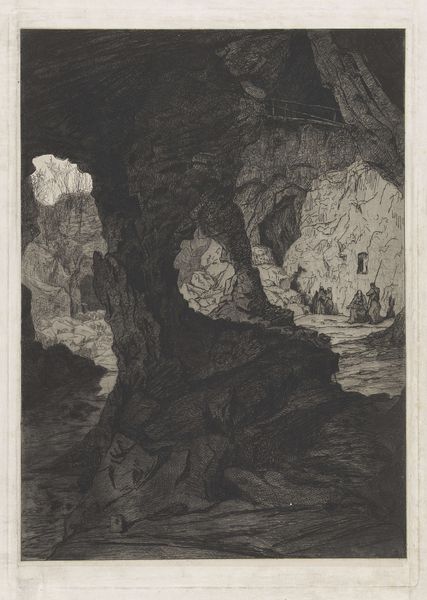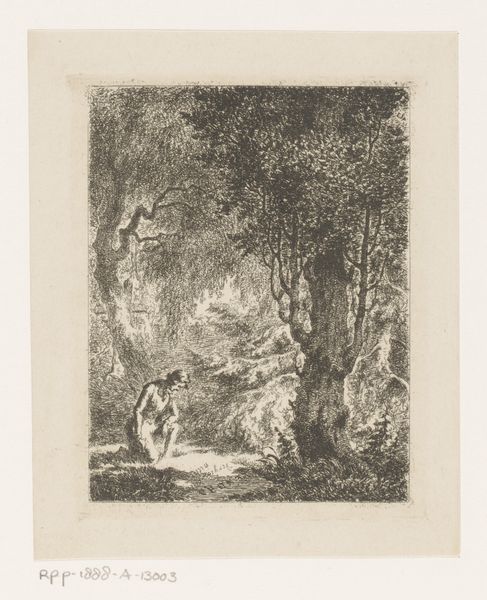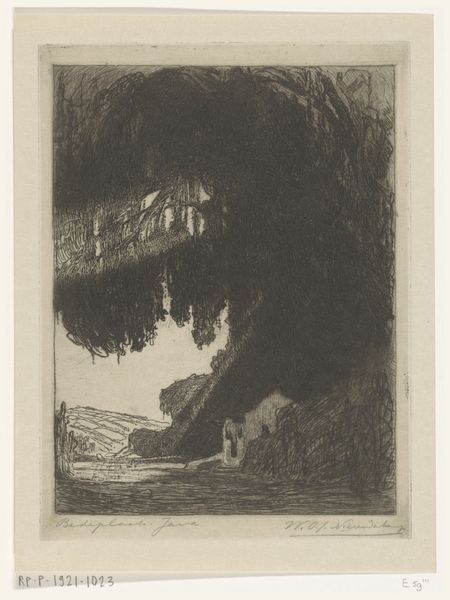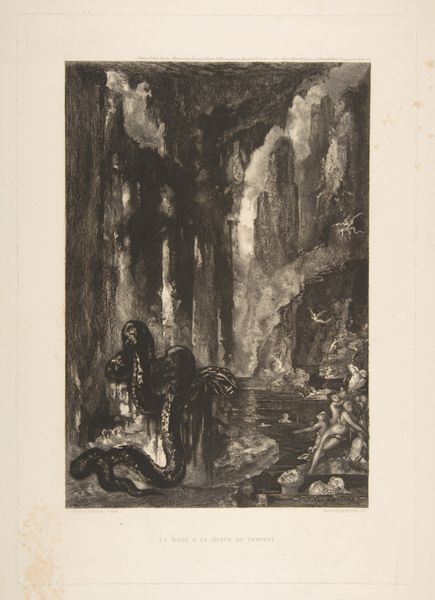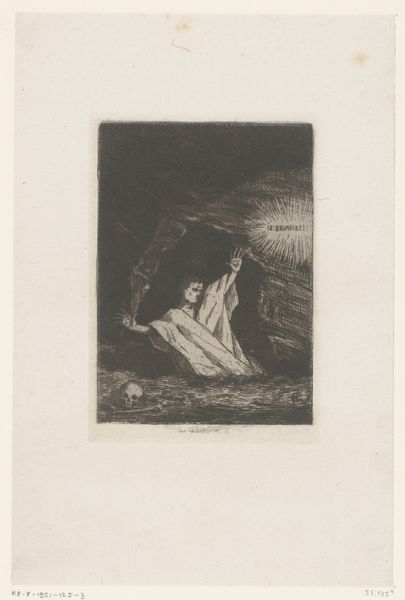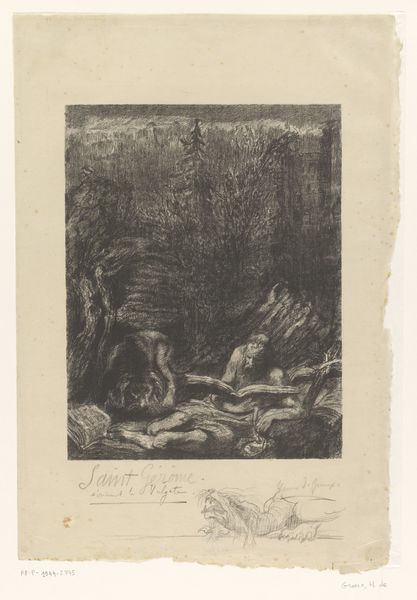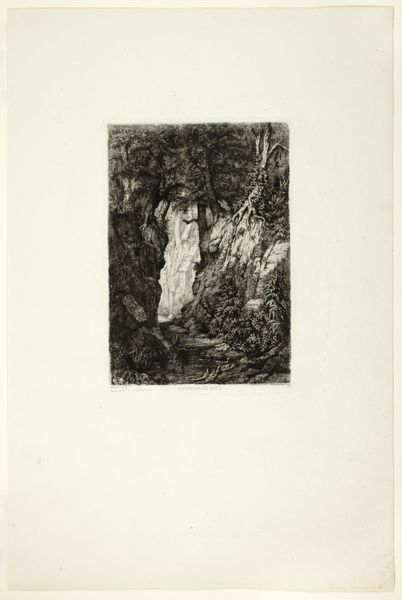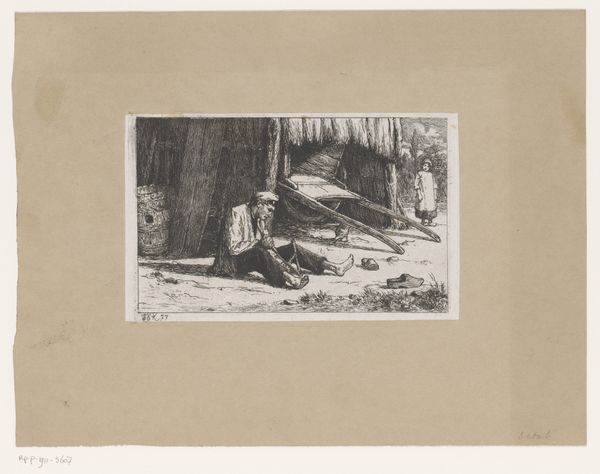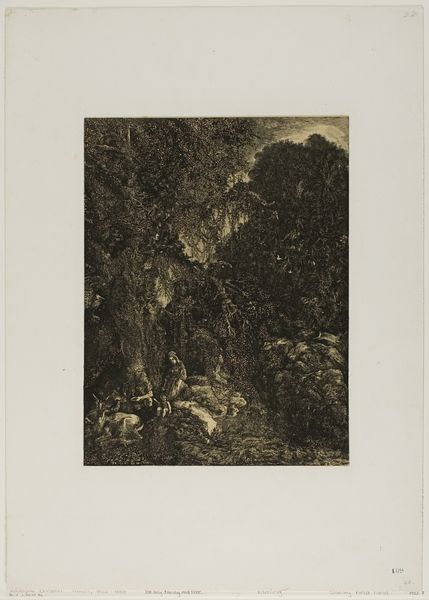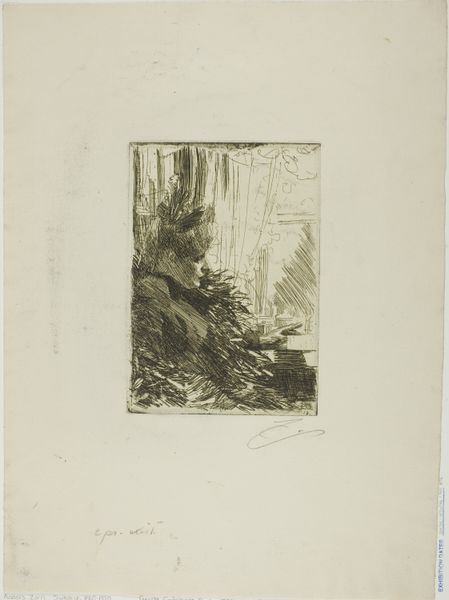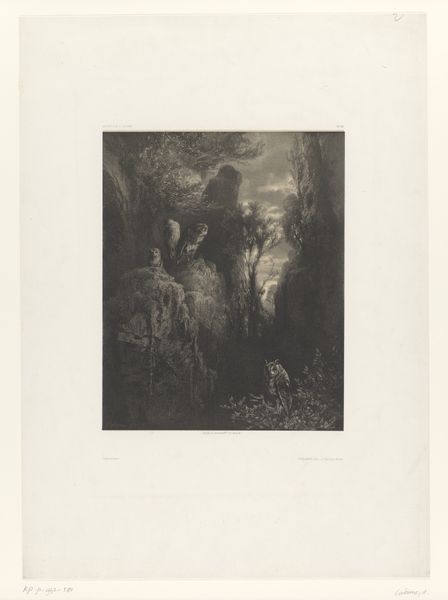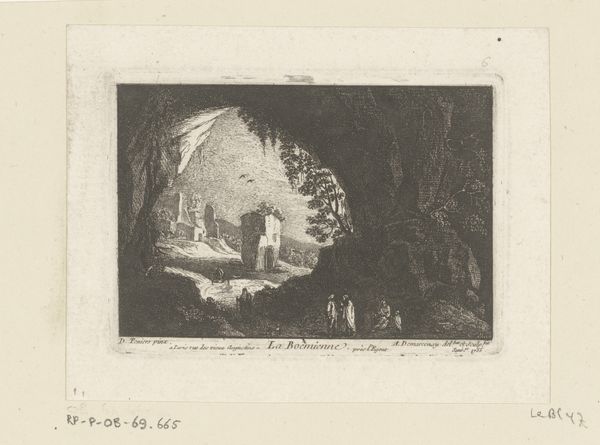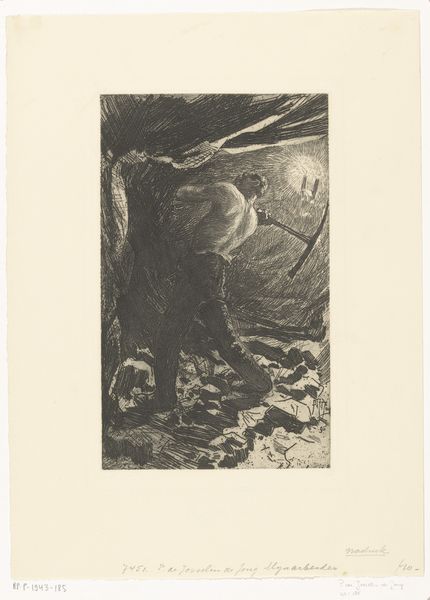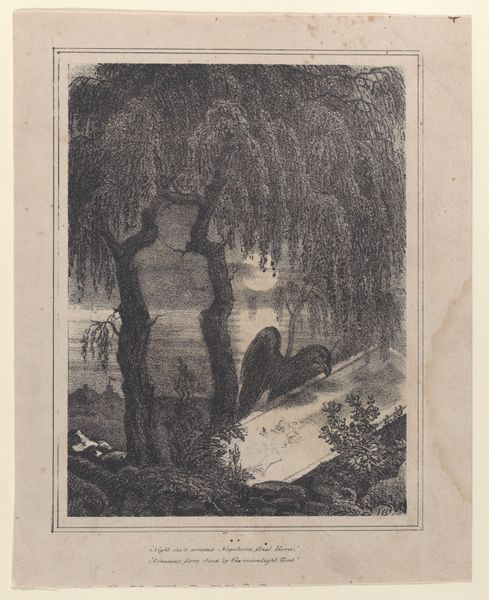
Dimensions: height 457 mm, width 289 mm
Copyright: Rijks Museum: Open Domain
Curator: The mood here is instantly gripping. The etching is dark and shadowy, creating a palpable sense of unease. Editor: Indeed. Let’s delve into the historical context. What we're seeing is "Interior of a Dark Cave with Creatures Devouring a Naked Man," an etching crafted by Marcel Roux in 1909. It's a powerful piece, particularly evocative of its time. Curator: Absolutely. You sense that anxiety and existential questioning inherent in early 20th-century thought. There is an unsettling quality in the artist's rendering of predation—we’re looking at the abject. How do we understand this depiction of extreme violence in the context of a society grappling with war and social change? Editor: And how are these narratives perpetuated and reinforced? Roux was, after all, working within specific cultural institutions and drawing from a visual language of his own time. What existing images, myths, or historical events informed his choices? The politics of depicting violence against the vulnerable are ever-present, then and now. Curator: That’s so true! What kind of socio-political statements is he hoping to address through this macabre imagery? Does the naked man signify innocence, sacrifice, or perhaps a critique of societal structures that leave individuals exposed and vulnerable? Editor: Perhaps. It makes you think about the role of the artist as commentator or instigator, doesn't it? Who is his target audience, and what kind of emotional response is he hoping to evoke, and what is his positioning on the naked man on offer to a crowd? Curator: Thinking about who that “naked man” could stand for—who are those routinely dehumanized and victimized within systems of power? We need to talk about how those depictions can reinforce, but can also undermine systems of inequality. This complexity shouldn’t paralyze us from unpacking the work. Editor: Right. Analyzing it with sensitivity and with attention to the image’s ongoing circulation and interpretation is vital. This single print invites endless interrogation.
Comments
No comments
Be the first to comment and join the conversation on the ultimate creative platform.
